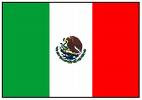
Philip Emeagwali (born in Nigeria)
"A Father of the Internet"
"A Father of the Internet"
- He developed the world's fastest computer of the time in 1989. The computation at 3.1 billion calculations per second increasing the speed of a massively parallel computer to as much as 1,000 times faster than a main frame computer and 1,000,000 times faster than a personal computer.
-Problems once thought unsolvable were able to be solved.
-His computer solved one of the United Stated 20 most difficult computing problems.
-His computer can aid in forecasting the weather, predicting global warming, and extracting oil more productively.
-In 1974 he formulated a theoretical HyperBall International Network--as he called it--connecting 64,000 computers to forecast the weather. This led CNN to dub him, "A Father of the Internet," because it was his formula that "led to computer scientists comprehending the capabilities of supercomputers and the practical applications of creating a system that allowed multiple computers to communicate."
-Problems once thought unsolvable were able to be solved.
-His computer solved one of the United Stated 20 most difficult computing problems.
-His computer can aid in forecasting the weather, predicting global warming, and extracting oil more productively.
-In 1974 he formulated a theoretical HyperBall International Network--as he called it--connecting 64,000 computers to forecast the weather. This led CNN to dub him, "A Father of the Internet," because it was his formula that "led to computer scientists comprehending the capabilities of supercomputers and the practical applications of creating a system that allowed multiple computers to communicate."




































